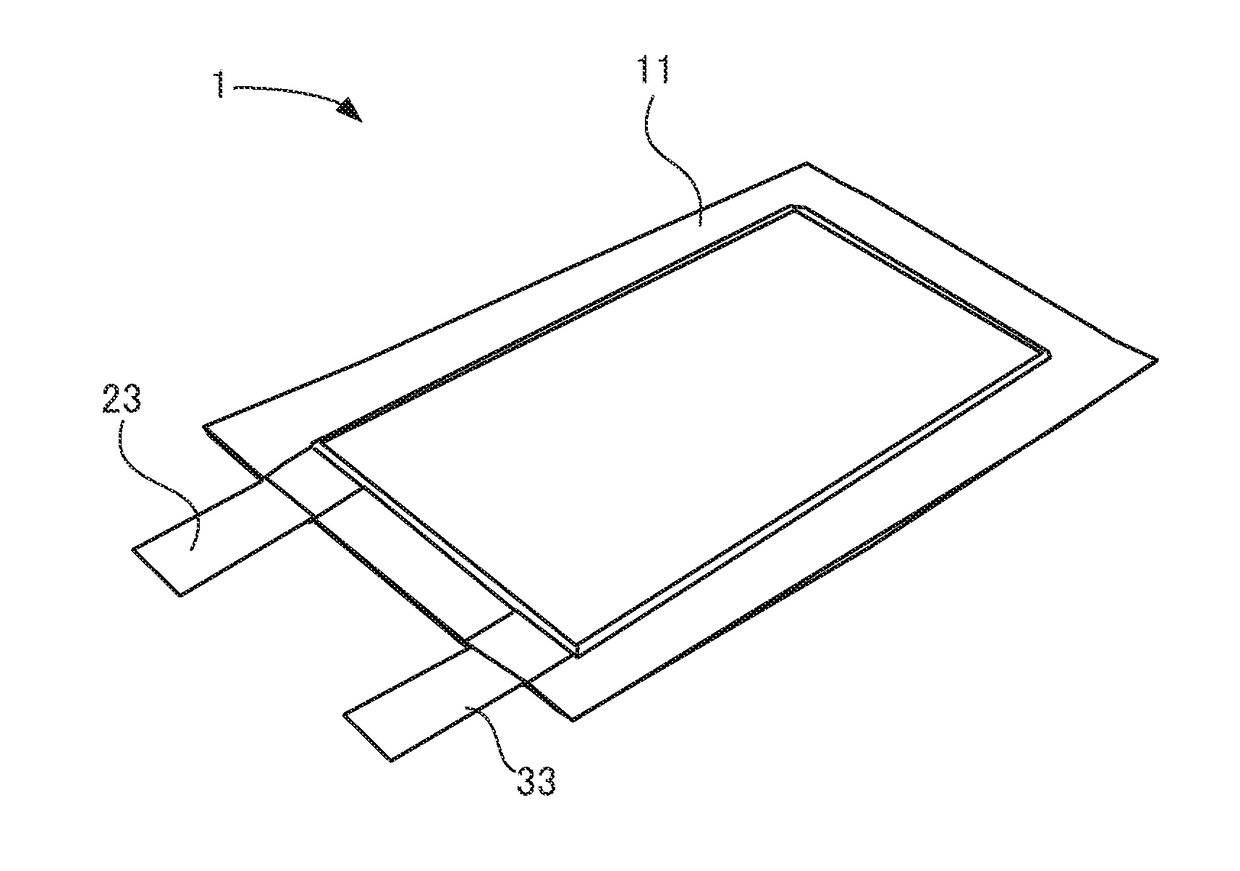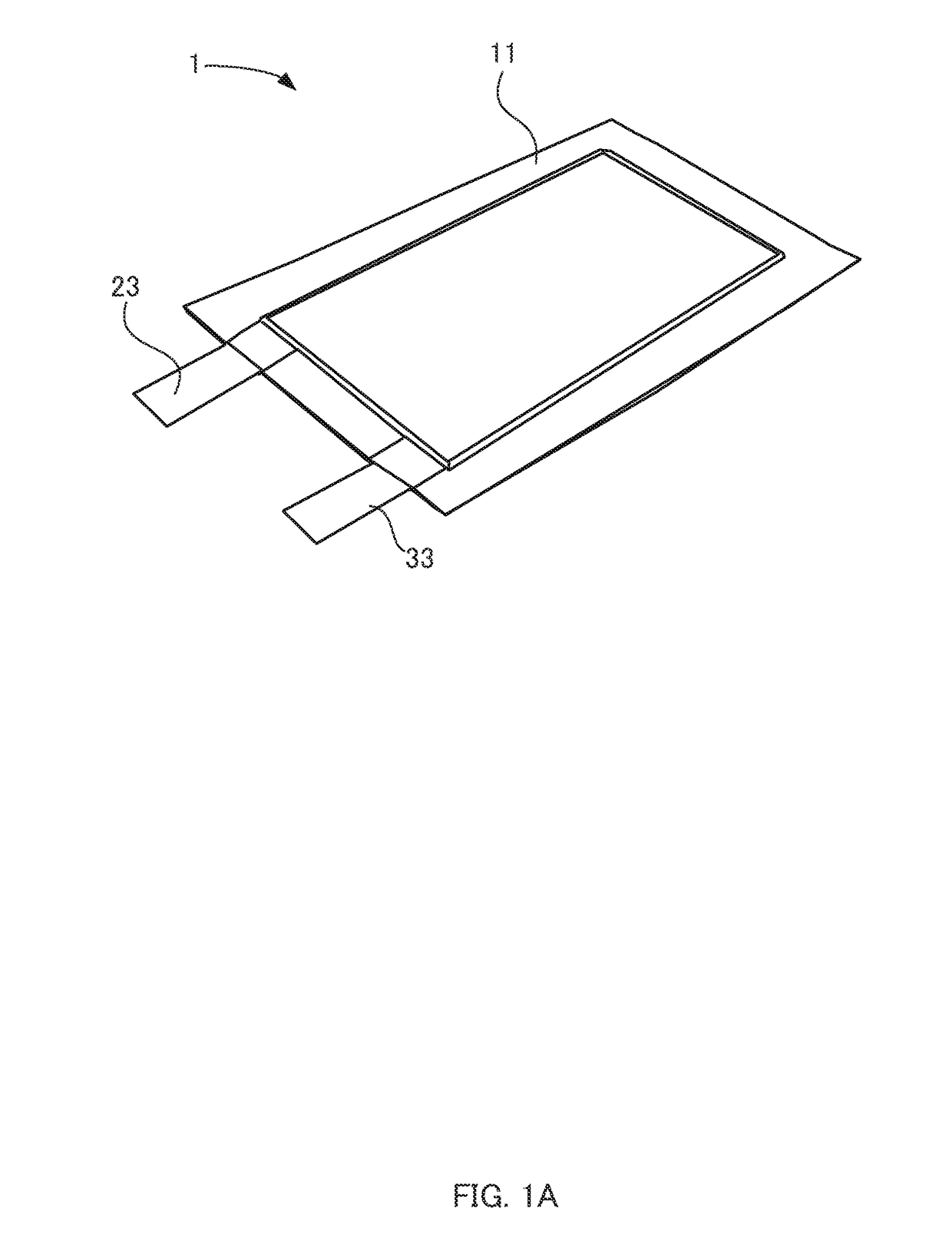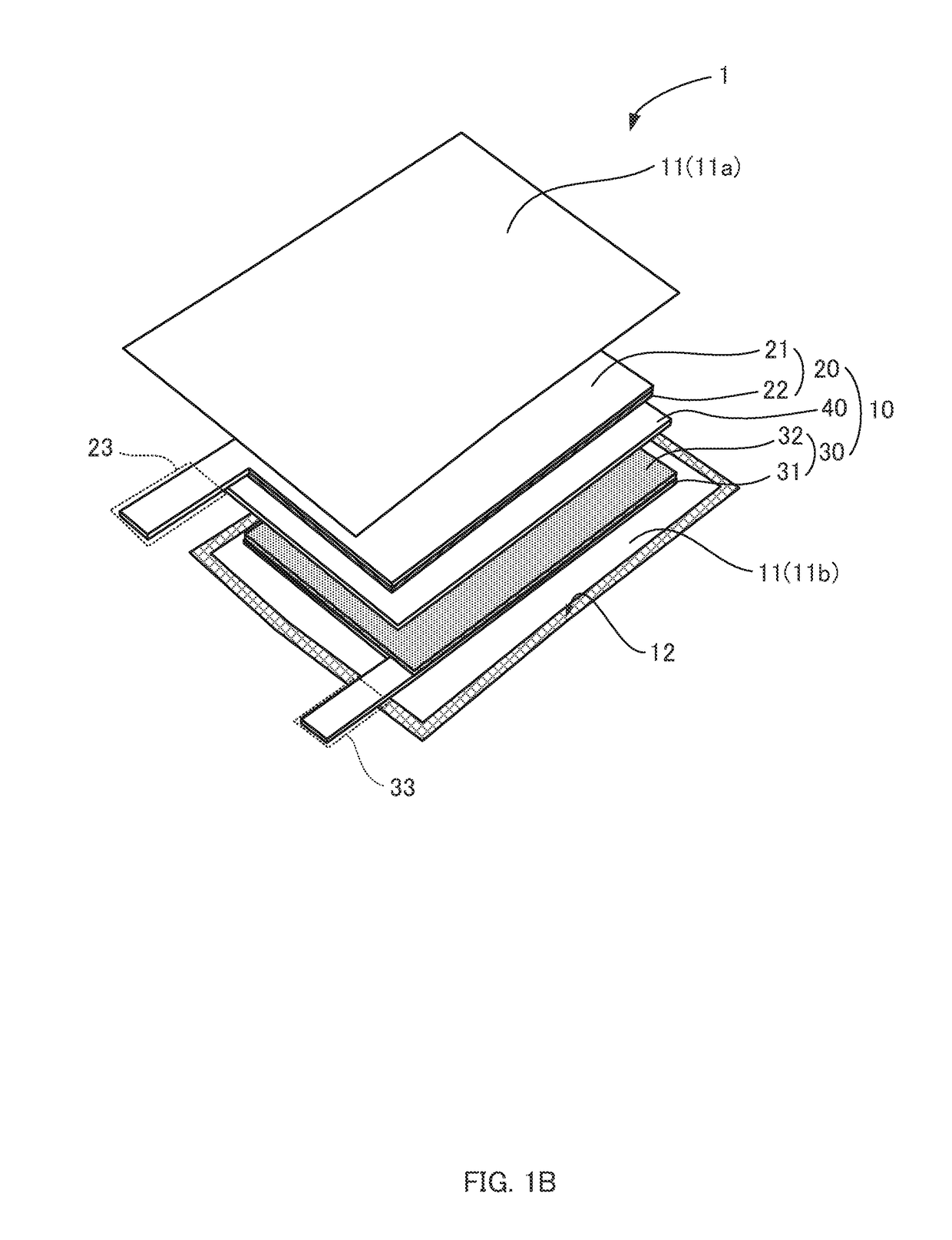Laminated rechargeable element
a rechargeable element and laminate technology, applied in the direction of cell components, sustainable manufacturing/processing, batteries, etc., can solve the problems of reducing the amount of active materials, corroding of exposed aluminum films, and unable to ensure the necessary discharge capacity, so as to reduce the thickness of the active material, the flatness of the smart card itself is damaged, and the strength can be guaranteed. high
- Summary
- Abstract
- Description
- Claims
- Application Information
AI Technical Summary
Benefits of technology
Problems solved by technology
Method used
Image
Examples
Embodiment Construction
[0017]In describing embodiments illustrated in the drawings, specific terminology is employed for the sake of clarity. However, the disclosure of this patent specification is not intended to be limited to the specific terminology so selected, and it is to be understood that each specific element includes all technical equivalents that have the same function, operate in a similar manner, and achieve a similar result.
[0018]Referring now to the drawings, wherein like reference numerals designate identical or corresponding parts throughout the several views thereof, a laminated rechargeable element according to embodiments of the present disclosure are described. As used herein, the singular forms “a”, “an”, and “the” are intended to include the plural forms as well, unless the context clearly indicates otherwise.
[0019]Structure
[0020]FIGS. 2A and 2B show the structure of a laminated rechargeable element according to an embodiment of this disclosure (hereinafter also referred to as a rec...
PUM
| Property | Measurement | Unit |
|---|---|---|
| thickness | aaaaa | aaaaa |
| thickness | aaaaa | aaaaa |
| thickness | aaaaa | aaaaa |
Abstract
Description
Claims
Application Information
 Login to View More
Login to View More - R&D
- Intellectual Property
- Life Sciences
- Materials
- Tech Scout
- Unparalleled Data Quality
- Higher Quality Content
- 60% Fewer Hallucinations
Browse by: Latest US Patents, China's latest patents, Technical Efficacy Thesaurus, Application Domain, Technology Topic, Popular Technical Reports.
© 2025 PatSnap. All rights reserved.Legal|Privacy policy|Modern Slavery Act Transparency Statement|Sitemap|About US| Contact US: help@patsnap.com



